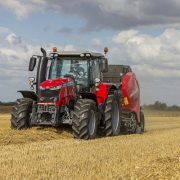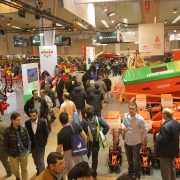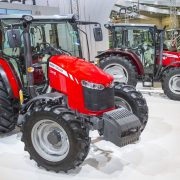European tractor market hits new high
Nearly 230,000 “tractors” were registered across Europe in the full year 2021, according to numbers sourced from national authorities. Of these registrations, just under 30% were of vehicles of 37kW (50 hp) and under and the remainder were 38kW and above.
CEMA considers that just under180,000 of these vehicles are agricultural tractors. The rest are made up of a variety of vehicles which are sometimes classified as tractors, which includes quad bikes, side-by-sides, telehandlers or other equipment. An overview of the total tractor registrations can be found in the annex, including an indication of the proportion of registrations in each country which can be classified as agricultural tractors.
Agricultural tractor registrations for the full year 2021 increased by around 17% in comparison with 2020. Even allowing for the fact that the market in 2020 was disrupted due to the Covid-19 pandemic, particularly in the second quarter, this growth represents a significant improvement in market conditions. Indeed, the number of tractors registered was the highest recorded in comparable data which date back over a decade. These strong results were achieved despite widespread disruption to global manufacturing supply chains and staff shortages due to high Covid-19 infection rates.
Manufacturers warn of continuing production delays
Agricultural machinery manufacturers underline that disruptions to the smooth running of their production activities have multiplied over the last few months. Across the board, the situation has been worsening since the summer of 2021. Even before the crisis in Ukraine, in the February 2022 CEMA Barometer, 51% of the responding manufacturers said they expected some production stoppages due to supplier side shortages in the next four weeks. The issue is even more widespread among manufacturers of tractors and harvesting equipment, with respectively 64% and 71% of respondents reporting that they expected production stoppages. The war in Ukraine has triggered even more supply bottlenecks, as already apparent by early March in the latest CEMA Barometer.
These concerns add to other reported disruptions: transport and logistics, where the shortage of containers has caused a decided increase in costs and delays; manpower availability to run plants at full capacity due to the spread of the Covid-19 Omicron variant; rising commodity and energy costs.
As the disruptions further worsen and with the agricultural season of use upon us, manufacturers stress again their concerns regarding the possibility of fulfilling their orders in a timely manner despite all the efforts put in place across the value chain. The full impact of the war remains to be assessed.















